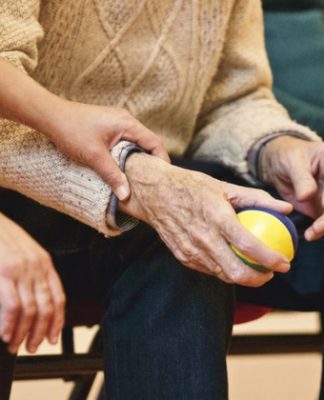What do we do when defenses and resistances crop up early on in a session before a conscious therapeutic alliance and an agreement has been established about the therapeutic task? Tactical defenses are particularly common — gaze avoidance, vague and imprecise speech, equivocations such as, “I guess, perhaps, maybe,” and so on.
The dilemma: If we do not have a conscious alliance, we really are on thin ice if we suggest or imply, let alone directly state — that the patient should be different from the way they are. This is a hot-bed for enactments and getting into shoes we don’t want to be in. It’s a recipe for for misalliances.
On the other side of the conflict is that if we do not address and comment on things such as gaze-avoidance or tactical defenses when they crop up, they tend to gain a head-of-steam and very easily derail the therapy, and it also becomes that much harder down the road to suddenly start to comment on things that have become a norm in how the therapist and the patient relate to each other.
To address the answer to this dilemma, I will try to elaborate on the idea of bringing information to the patient’s attention in a way that is matter of fact and without a pressuring or challenging tone. The tone to be avoided is one that suggests that the patient should be different.
Once the conscious alliance is firmly in place, pressure and challenge (aimed at mobilizing the patient’s psychodynamics) can be very therapeutic, but now we are focused on the portion of therapy where the conscious alliance has yet to be formed. Too often therapists use a kind of pressure and challenge that comes across as criticism.
And in fact, pressure and challenge before the conscious alliance is in place indeed amounts to a message to the patient that we indeed think they should be different from the way they are. Whether it be more in touch with their feelings, less distant, and more direct and precise, we indeed are criticizing them if we seek to mobilize their unconscious (i.e., get them to be different) prior to a conscious therapeutic alliance.
Think of a landscaper who is hired to tend to a garden. The landscaper knows that certain weeds are likely to be a corrosive force in any garden and make it impossible for roses and violets to thrive. At the same time, the prudent landscaper who was hired to do this job doesn’t want to be presumptuous — perhaps this client has a weed-esthetic and wants these weeds to be part of the garden. The client does not show concern about the weeds, they simply shared a wish to have more roses and violates.
The landscaper here needs to bring up the issue of the weeds in matter of fact, almost neutral manner. “I see that you have a number of these weeds in your garden. Do you know that, based on my experience anyway, these weeds make it very difficult for roses and violates to thrive?”
My reading of Dr. Davanloo’s equivalent of the landscaper’s approach is when he would say things like, “we have a task together, and to accomplish the task we need access to your most intimate thoughts and your most intimate feelings. And when you distance yourself through these mechanisms that we have become acquainted with, that task becomes impossible.”
So much of this is in the tone. There is no pressure in the tone, in the sense of implied criticism, in the sense that the therapist needs the patient to be different.
When I have patients who seem particularly bewildered and confused about why I am focusing on their weeds, I might say things like, “I am pointing this out because it seems to me to be the main thing going on in the room and that there might be implications for our work, but I am not saying that you have to make eye contact or that you have to change this behavior.” This typically goes a long way in indirectly undoing defiance.
In the same vein I also tend to say things like, “In terms of our work together it’s hard for me to see how I can be helpful to you when you keep your distance through X and Y behaviors, but maybe this is an exception for you and your tendency to engage in X and Y behaviors outside of here are actually problem-free for you?”
It’s important that even though I suspect that the distancing behaviors indeed are linked to their presenting problems and indeed problematic outside of therapy too, that I keep an open mind.
I might follow up with:
“Could we look at some instances from your life when you engaged the X and the Y behaviors so we can try to learn whether or not there is something idiosyncratic about our relationship, or if your distancing outside of this room has downsides for you as well?”
The key thing here is for me to be open to the possibility that from the patient’s point of view at least (and the patient’s point of view is very important), they may actually not think that their distancing behaviors (and how they avoid feelings) are a problem in their lives, and that the pressing problem is that the therapist they find themselves in front of is focused on something that the patient does not see the importance of.
We call this ego-syntonic defenses, but I have found that my odds of rendering these defenses ego-dystonic are best when I can be open to the possibility that the patient just does not see things the way I do.
The heart of the intervention that I have in mind is an attitude that conveys — “I am open to the possibility that these weeds (defenses) that concern me may not be a problem for you, and that I am the problem for focusing on them, and that you may have an altogether different idea for how to make the most use of our time together.”
It is rare for a patient to insist that there are no downsides to their defenses after an exploration of the effects of the distancing behaviors in their current and past life-orbits, but it occasionally happens. This kind of patient may be adamant about that they just want me to listen to them. Sometimes I have a hunch that this may indeed be therapeutic and I go along with this while staying alert for opportunities to work more intrapsychically, and at other times I have a clearer sense that what the patient is proposing does not feel helpful or like something I want to do.
In the latter instances, I make a point of conveying respect for their viewpoint while not sugar-coating the clinical dilemma. I might say, “We really seem to be at an impasse, in that we are so far from each other on this.” In acknowledging that it is not clear to me how to proceed in these situations, the patient may begin to come around and see the downside of their distancing, and if not, this is the time I suggest referrals to other therapists.
In summary — my bias is to comment on defenses and tactical defenses, especially as it becomes clear that they begin to truly clog up the gears of collaboration and openness, but until the patient has really bought into the premise that their defenses drive their presenting problems and they unequivocally wish to relinquish their defenses in favor of facing what they have been avoiding, I aim to be a prudent landscaper — honest about my biases and how I see things, particularly around what I think will impede the patient from reaching their goals — but never assuming that the patient will agree with me, and always making it clear that I do not need the patient to change or be different from the way they are.


 I have a passion for practicing ISTDP informed psychotherapy and I enjoy writing about it. For more information and what I do, visit my website: www.johanneskieding.com
I have a passion for practicing ISTDP informed psychotherapy and I enjoy writing about it. For more information and what I do, visit my website: www.johanneskieding.com

















